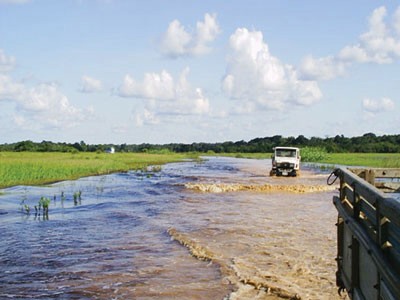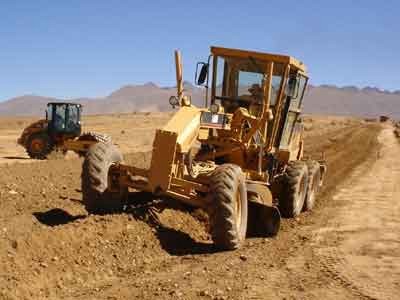4X4 Vehicles in High Altitude
COURSE OF ACTION TO DRIVE A 4X4 VEHICLE.
A SUV seems the most popular vehicle. Some are more a car like than others, others are more tougher, more brutish with glamorous advertising and claims of various makers of these trucks, but even if you are not going to drive on sand dunes, beaches or desserts, some are to drive on rocky mountain paths, or in the jungle forest type of paths.
Buyers of these vehicles do not know that a stallion beneath them suddenly becomes a pony because when these vehicles are fazed by roads, driveways as paths in a country like mine in Bolivia, they really are not in a freeway to Grandma's house or doing their daily commute down a paved, multilane freeway.
When it comes to drive a 4x4 vehicle on a mountain path, as on Andes here, all of a sudden you realize that engine does not perform as it stated in the manual and assured by the dealer, when you bought the vehicle, there is a lack of power, and the response of the vehicle is dull under certain conditions. Whether on contest or going on tortuous path that 2 hp needed to overcome a peak easily, or to grip and over pass a stone can not be achieved due to a selection of reasons two being the most important items to consider: horsepower and torque.

Horsepower and torque figures are a strong predictor but do not guarantee a specific 0-60 mph or 1/4 mile E.T. (elapsed time). An engine accelerating in a vehicle experiences different conditions than on a dynamometer. G forces and different temperatures as well as different modes of vibration in a vehicle can cause significant differences in power output. Measured by Dynamometer vehicle test stands.
Engine dynamometer
An engine dynamometer measures power and torque directly from the engine's crankshaft (or flywheel) crank, when the engine is removed from the vehicle. These dynamometers do not account for power losses in the drive train, such as the gearbox, transmission or differential, etc.
Chassis dynamometer
A chassis dynamometer measures power from the engine through the wheels. The vehicle is parked on rollers, which the truck then turns and the output is measured. These dynamometers can be fixed or portable.
Because of frictional and mechanical losses in the various drive train components, the measured horsepower is generally 15-20 percent less than the brake horsepower measured at the crankshaft or flywheel on an engine dynamometer.
This means less power than specified by manufacturers, dealers, and market advertised.
4x4 or SUV's truck and cars Manufacturers Laboratories or research centers typically are places located at sea level, in absolute conditions of cleanness, full of testing technology and computing apparatus, without vibration, radio signal interference and others, including the pure air controlled flow, no contamination, etc.
What I bring into being is always forgotten is a fact that those vehicles are not going to operate under laboratory conditions. In real life driving many facts contribute to reduce vehicle power and restraint its own capabilities, one of them is altitude.
According to general performance tests the higher the terrain or place you drive your 4x4 engine performance is worse. In fact altitude is very important for the engine performance accordingly.
Every each 1000 feet of altitude gasoline looses 2 to 3 RON octane numbers, as a result if one utilizes a gasoline of 90 octane and drives a 4x4 on an elevation of 8398.9 foot above sea level (as in my city) in fact that same gasoline will be 74 RON octane number or much less which weakens the engine power output.
Gasoline RON stands for "Research Octane Number" given at the petroleum refineries to formulate their gasoline grade, aided by computed data of different petroleum refined blend, these blend amounts produce certain type or grade of gasoline.

MON octane number stands for "Motor Octane Number", which is octane number, obtained from an engine at refinery or other laboratories, which interrelate that particular gasoline actual performance with a certain target grade gasoline. Therefore there is a giant difference between RON and MON octane numbers.
Usually gasoline with a 90 RON octane number, on test engine performs as an 80 MON octane number a real situation for that particular engine gasoline, consequently what is generally done is to sum the two values of gasoline and divide them into two, therefore that particular gasoline is 85 Octane MON-RON.
Another consideration when you are driving a 4x4 vehicle on the country side or mountain which is related to altitude is air oxygen content, very important for our vehicle performance, for instance if you are driving at altitudes of 8398.9 foot above sea level, oxygen content in the air is not 21% like it is at sea level, at the above mentioned altitude oxygen content in the air is 20.6 or less which spoils truck power.
Air amounts for fuel combustion in an engine is an important issue and also dependant of other factors such as air pressure, hot air is "light"; cold air is "heavy"
Another contributing factor for engine poor performance is air humidity, light air burns easily on the top of cylinder while heavy air goes down the cylinder. For practical applications of driving a 4x4 vehicle in unanticipated situations, such factors as those above mentioned are usually highly significant in determining the fuel efficiency, torque and power attained from a particular engine, despite of its brand, it must be suitable for every 4x4 particular application.
Luis Roberto del Castillo Bustamante
Acknowledgments
Universal Oil Products Michigan
YPFB former government petroleum refinery owner Petrobras Bolivia Refinacion